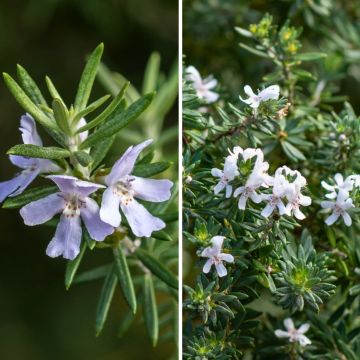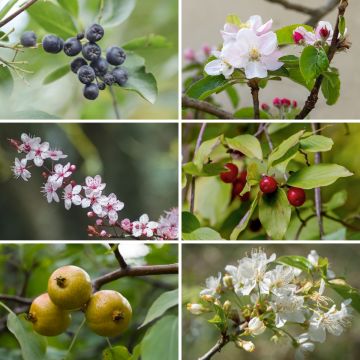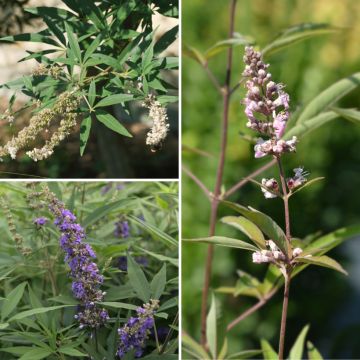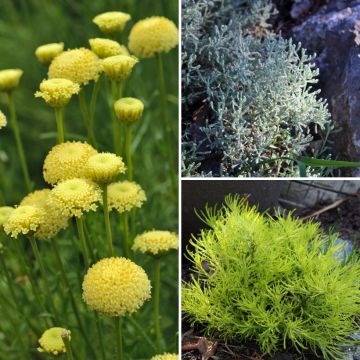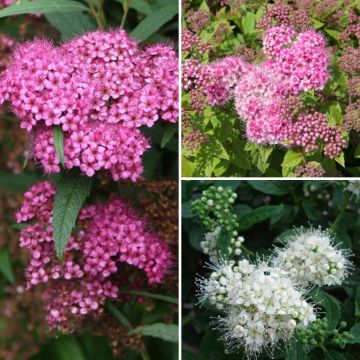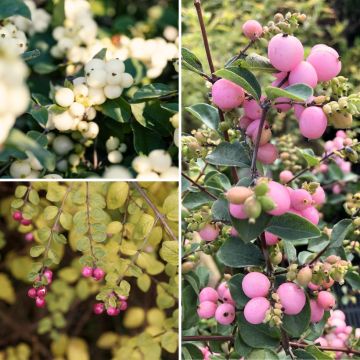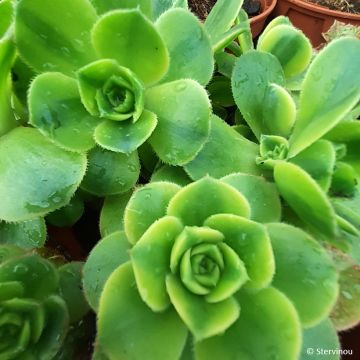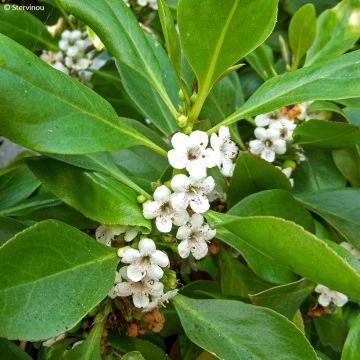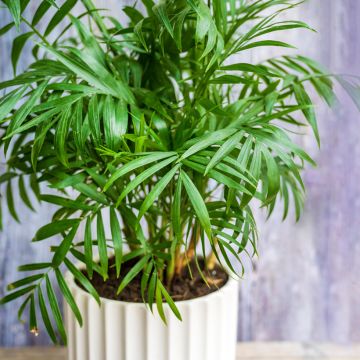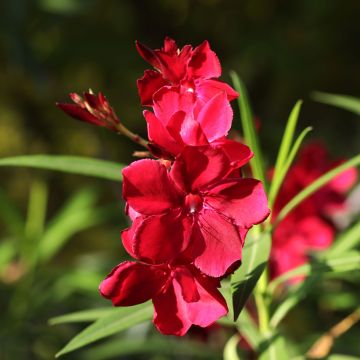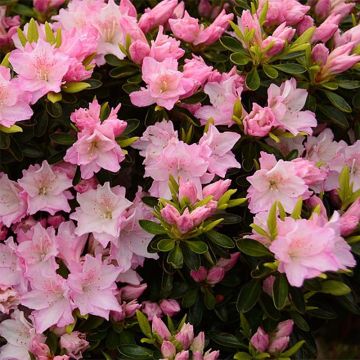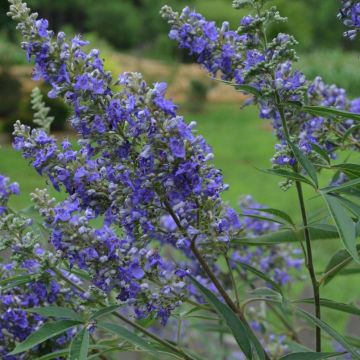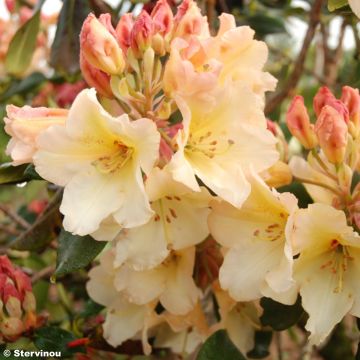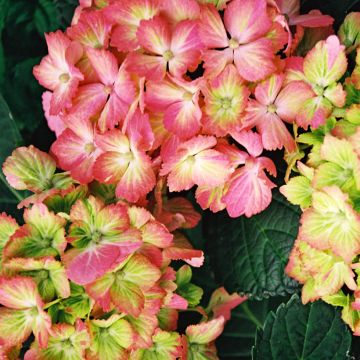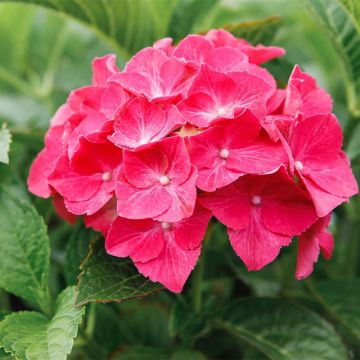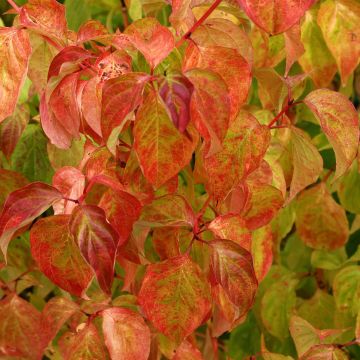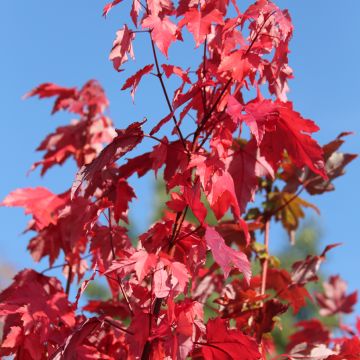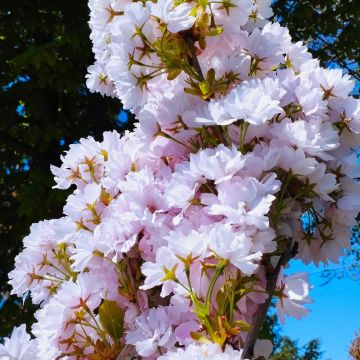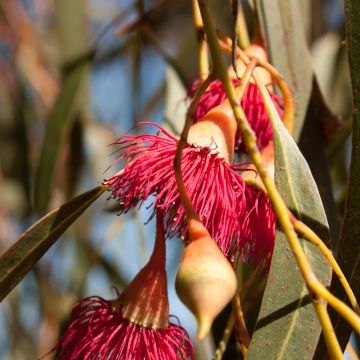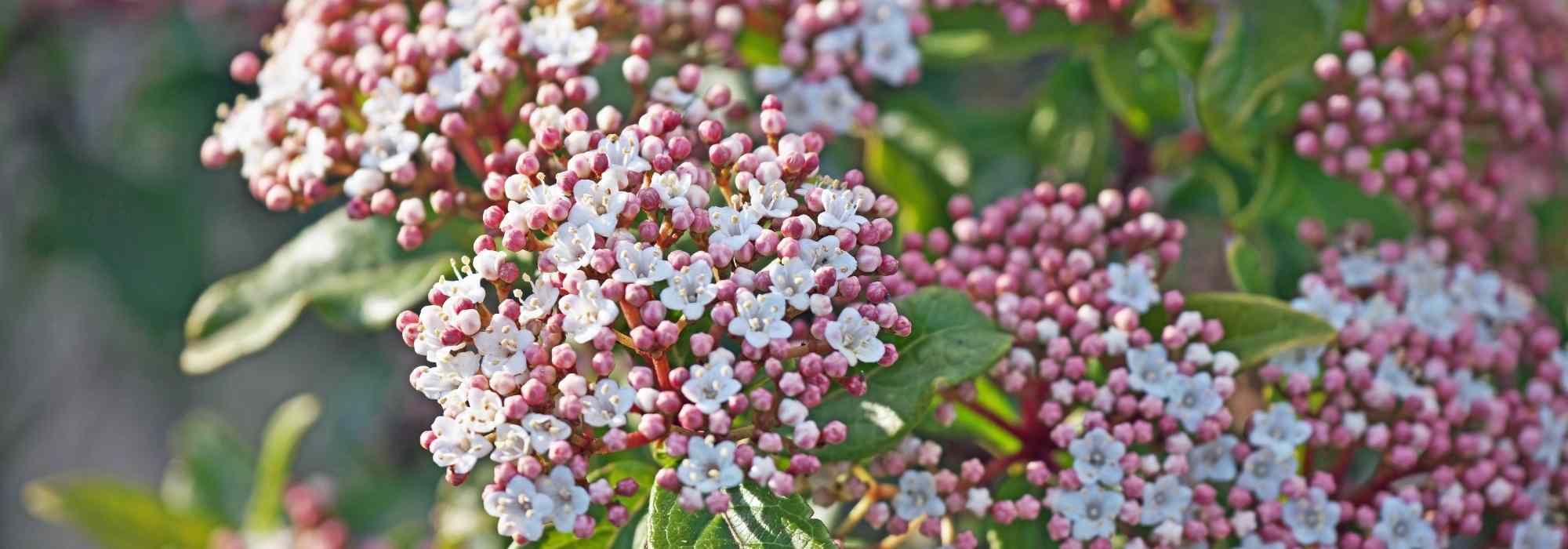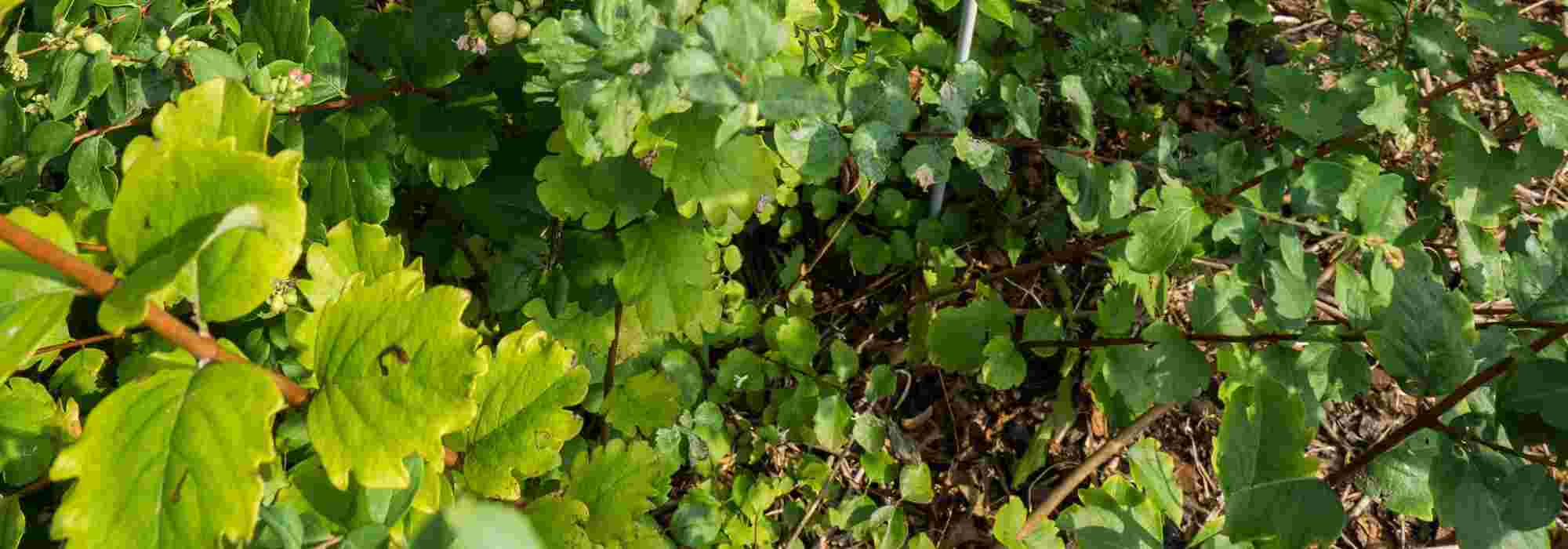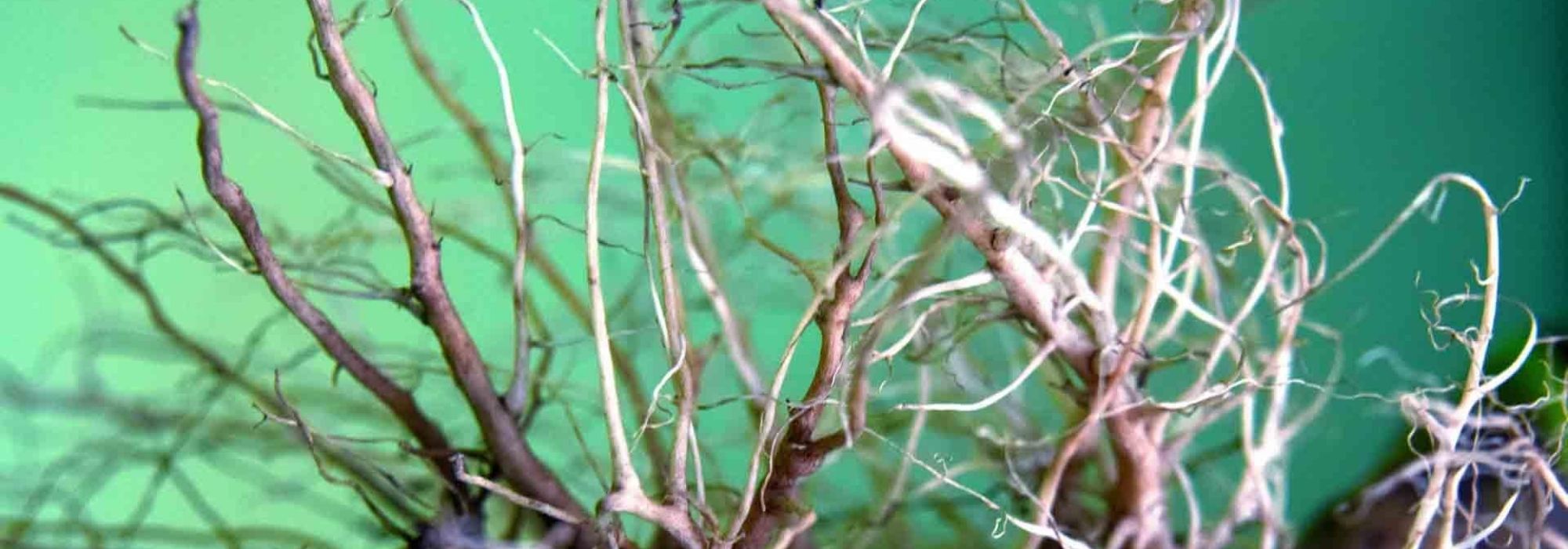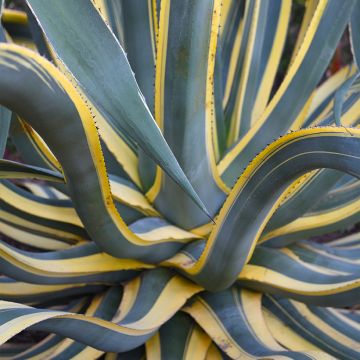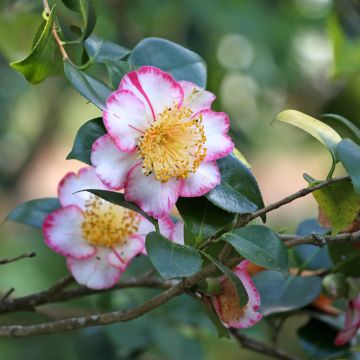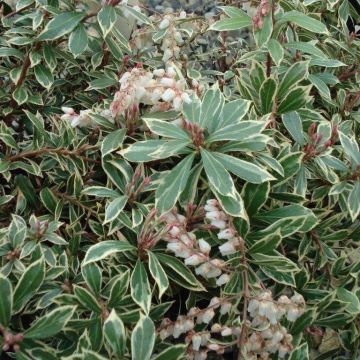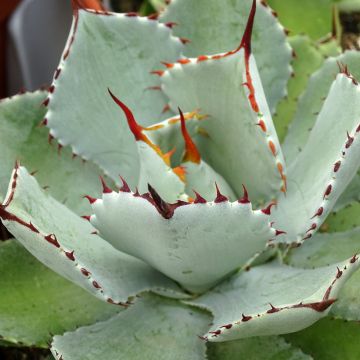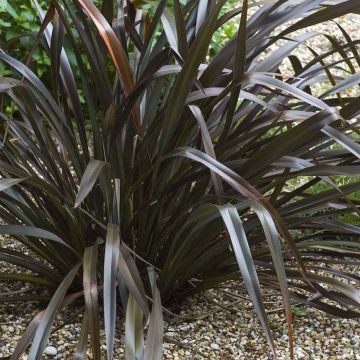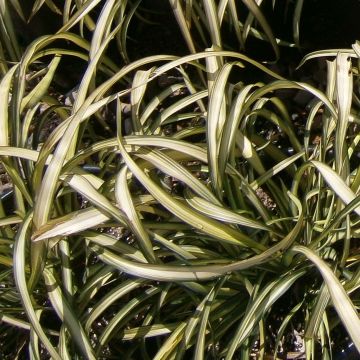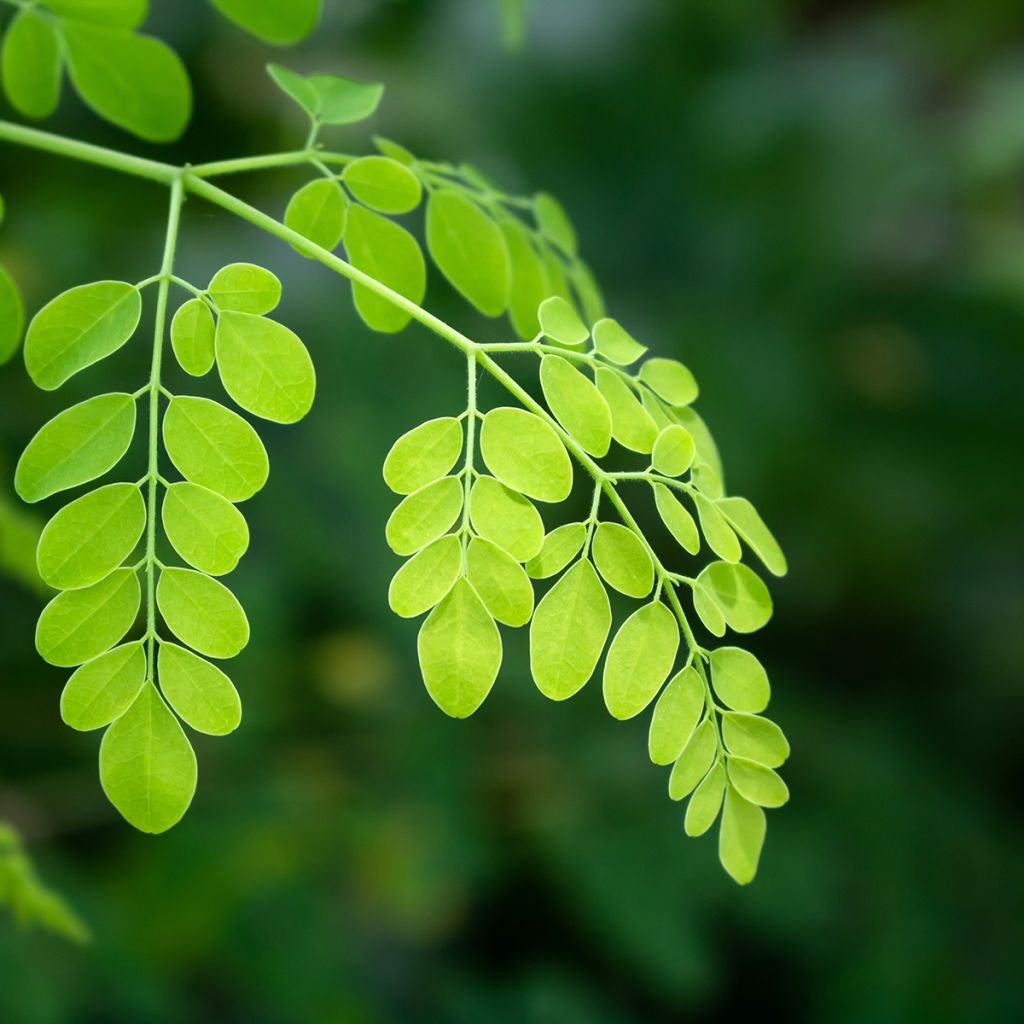

Moringa oleifera
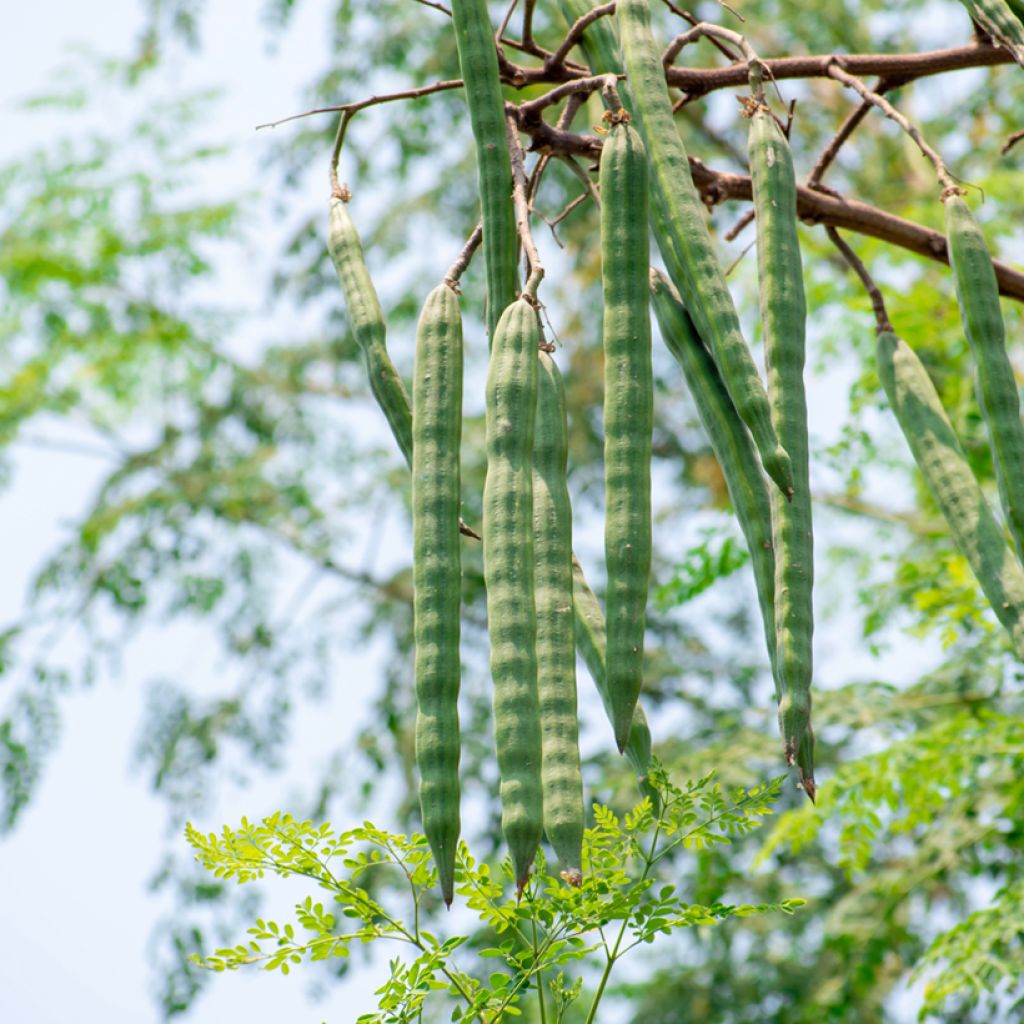

Moringa oleifera
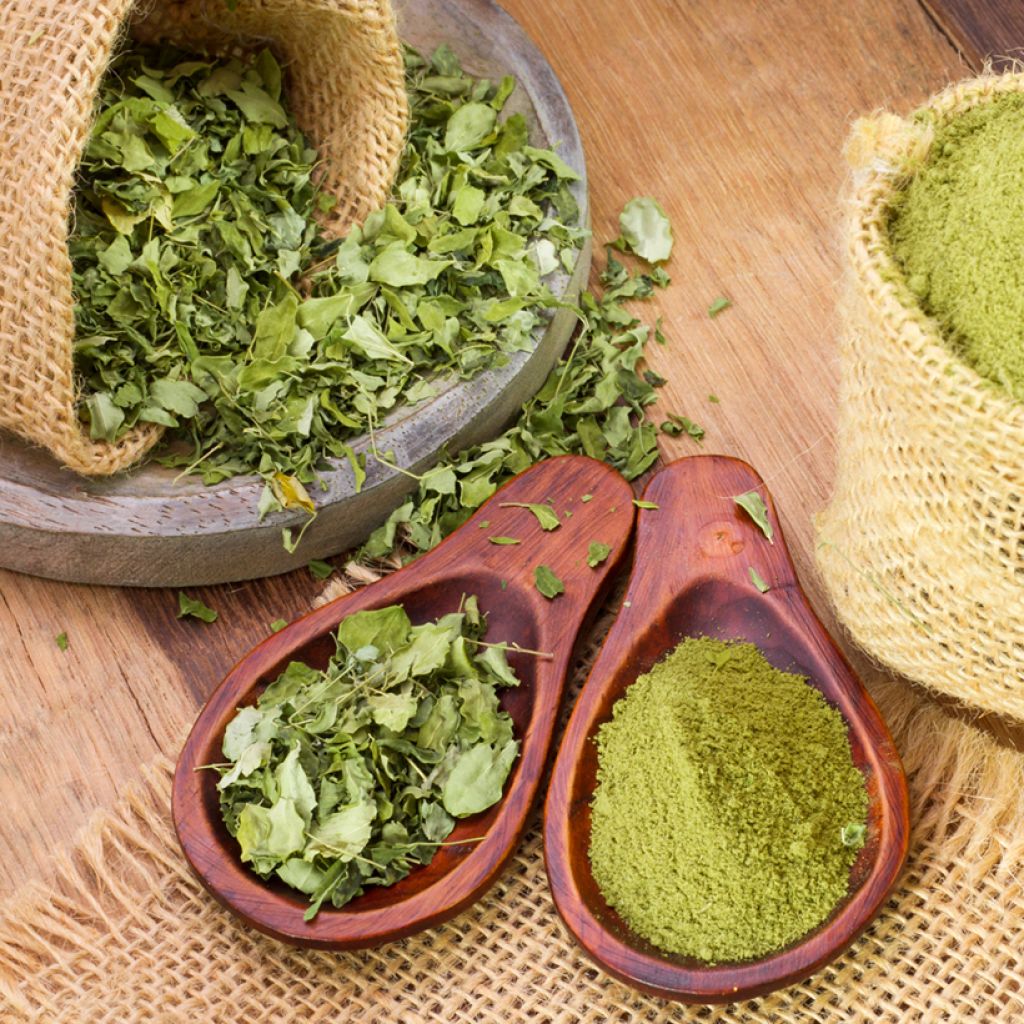

Moringa oleifera
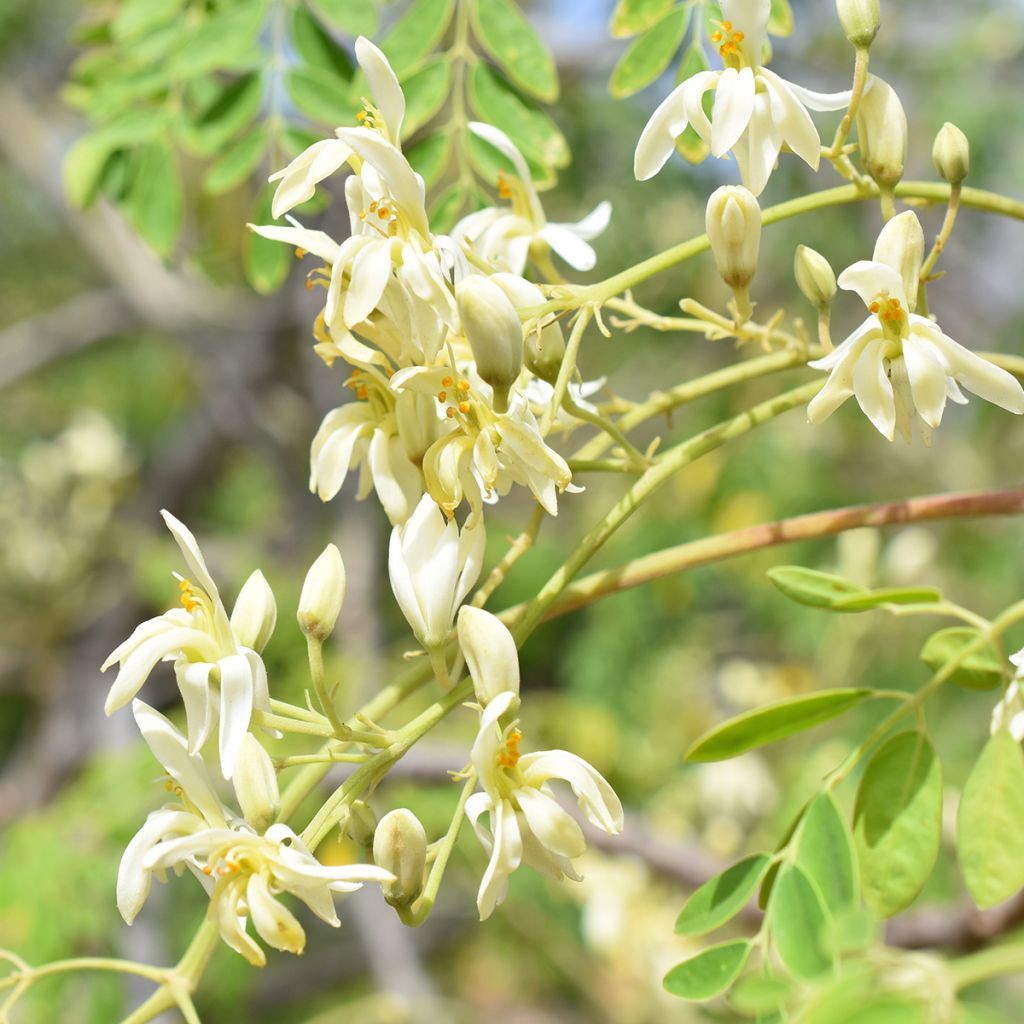

Moringa oleifera
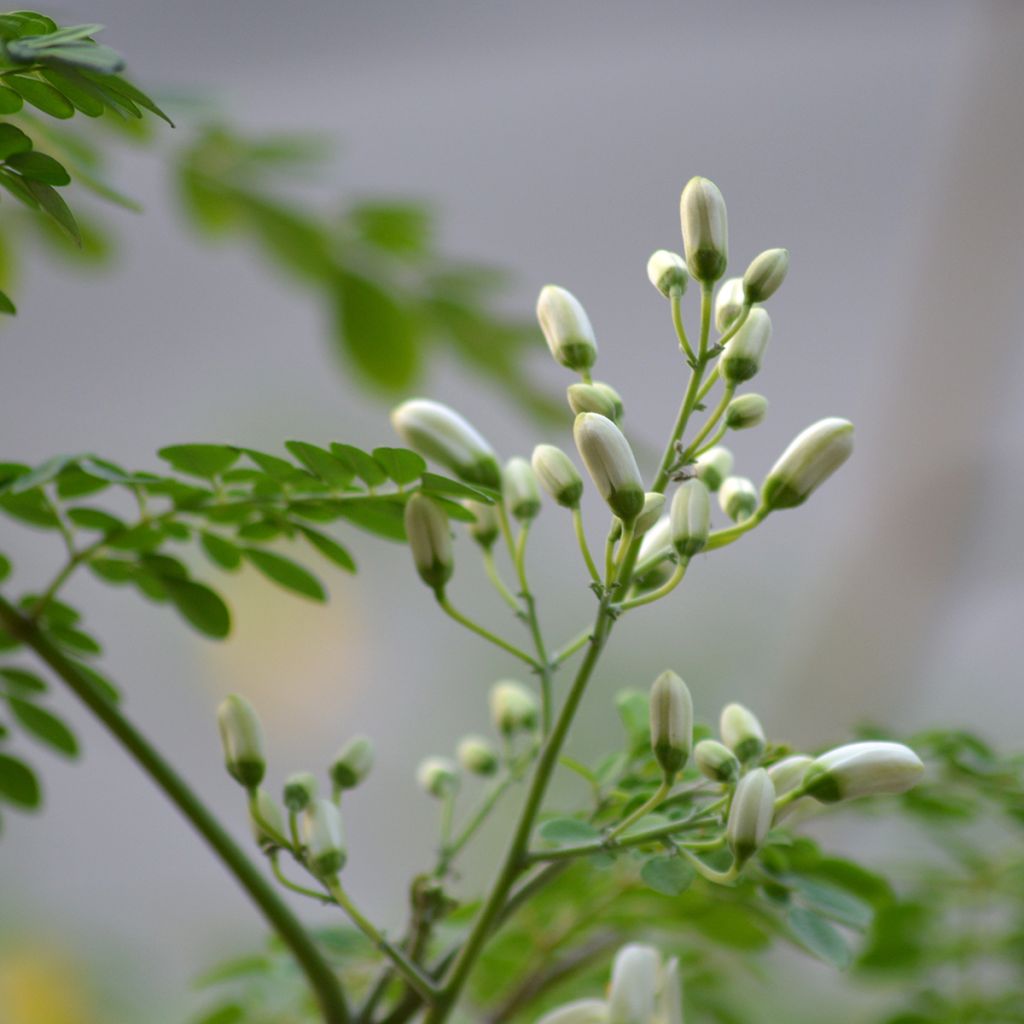

Moringa oleifera
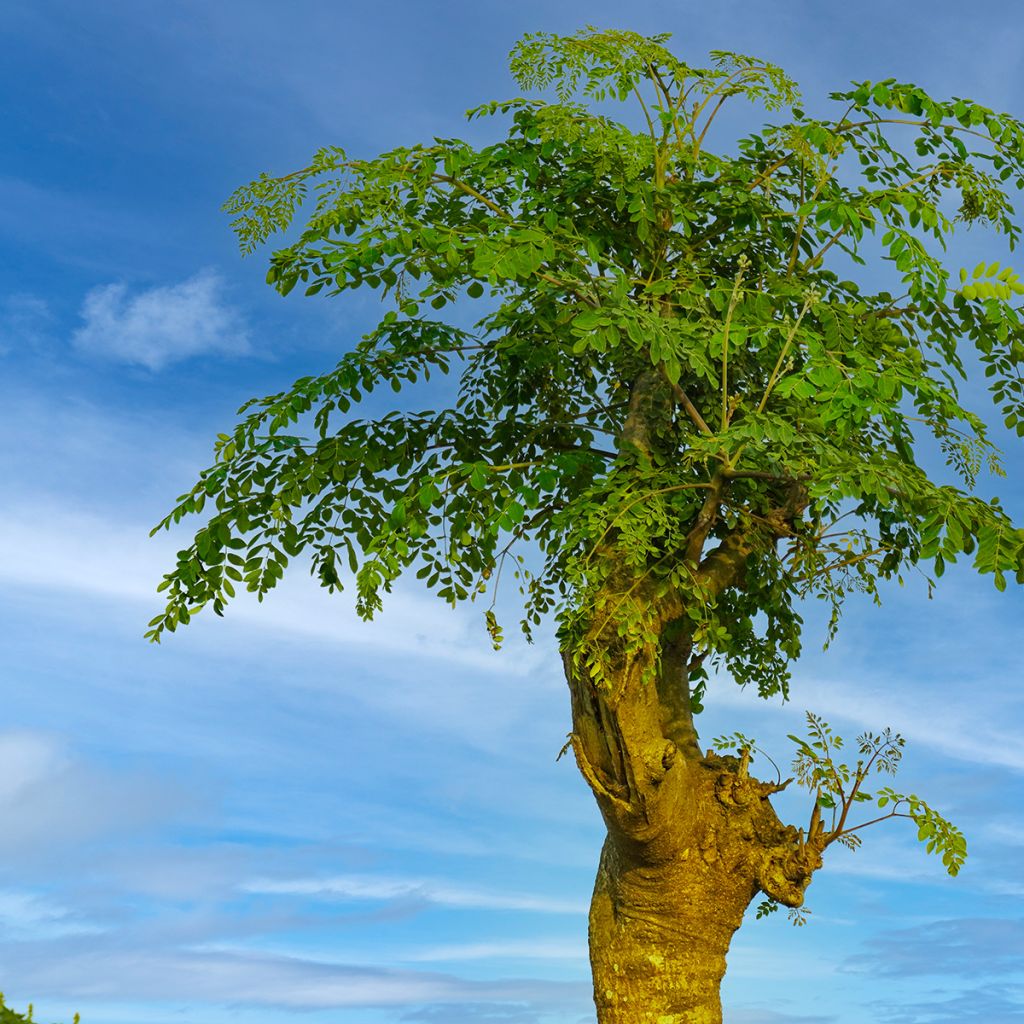

Moringa oleifera
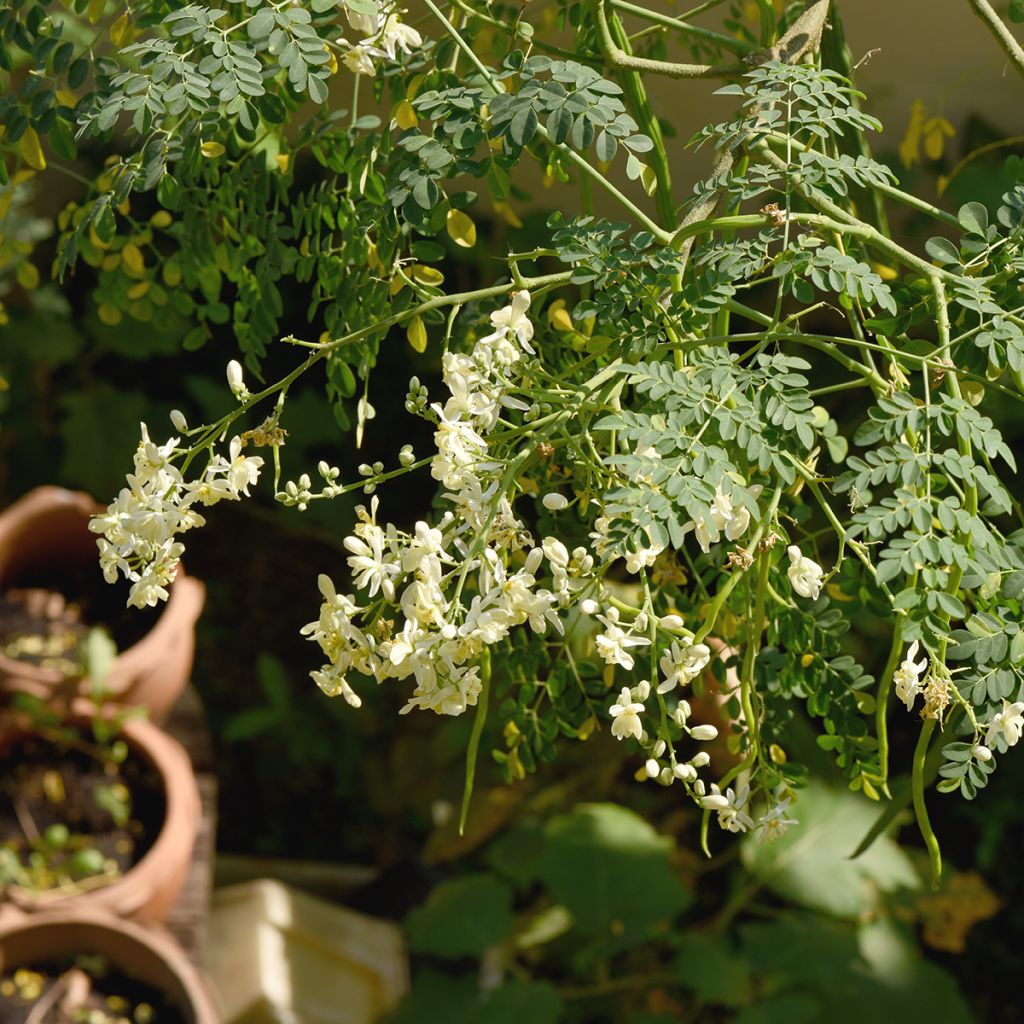

Moringa oleifera
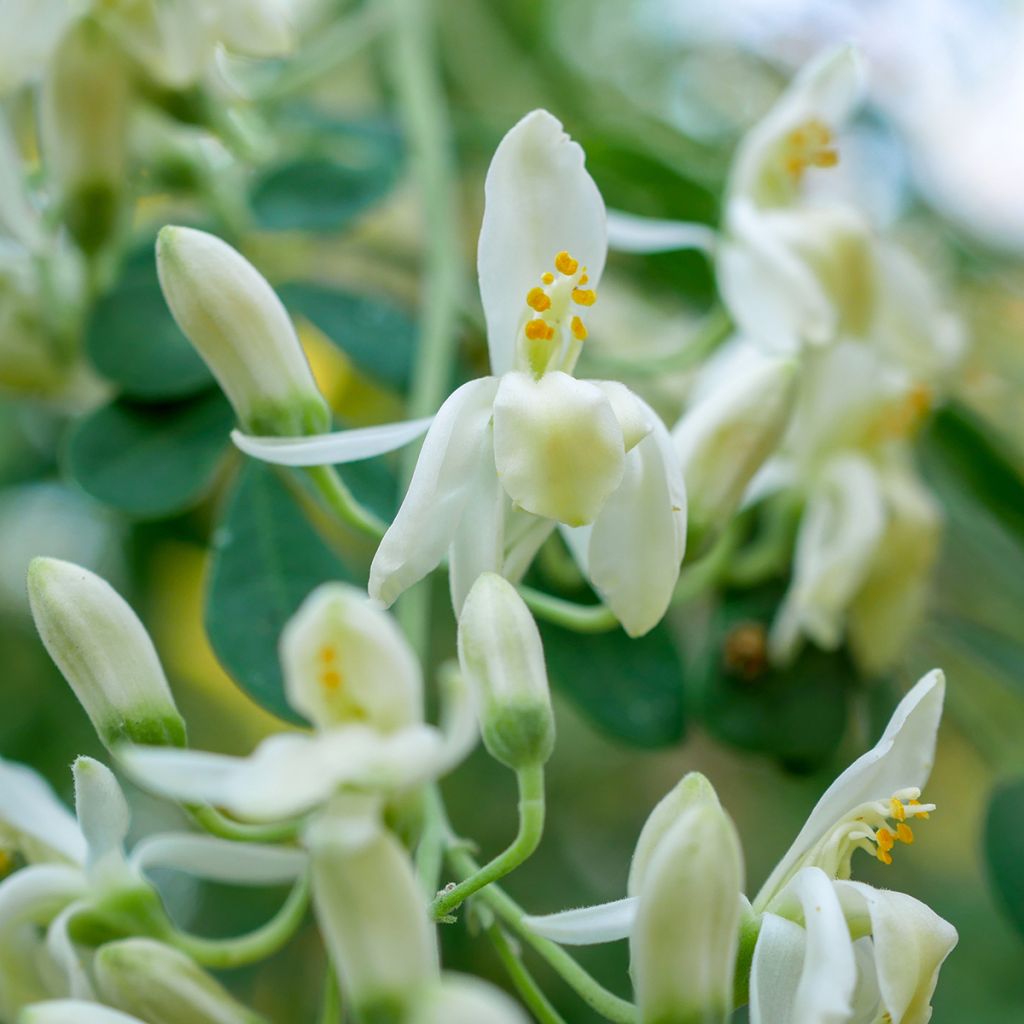

Moringa oleifera
Moringa oleifera
Moringa oleifera
Ben nut, Drumstick tree, Horseradish tree, Ben oil tree, Moringa
Special offer!
Receive a €20 voucher for any order over €90 (excluding delivery costs, credit notes, and plastic-free options)!
1- Add your favorite plants to your cart.
2- Once you have reached €90, confirm your order (you can even choose the delivery date!).
3- As soon as your order is shipped, you will receive an email containing your voucher code, valid for 3 months (90 days).
Your voucher is unique and can only be used once, for any order with a minimum value of €20, excluding delivery costs.
Can be combined with other current offers, non-divisible and non-refundable.
Why not try an alternative variety in stock?
View all →This plant carries a 24 months recovery warranty
More information
We guarantee the quality of our plants for a full growing cycle, and will replace at our expense any plant that fails to recover under normal climatic and planting conditions.
Does this plant fit my garden?
Set up your Plantfit profile →
Description
Moringa oleifera is nicknamed the 'Tree of Life', perhaps for its nutritional qualities and health benefits, but more likely due to its ability to survive very dry seasons thanks to its large tuberous root that stores water. It is a small tropical tree that grows very quickly, with elegant alfalfa-like foliage and fragrant flowering. Under our climates, it is an unusual and decorative indoor plant with a certain symbolism, very trendy. Moringa absolutely cannot tolerate frost, does not like temperature fluctuations, and requires warmth all year round. It is essential to cultivate it in a container. It will maintain a reasonable size, especially since it tolerates pruning very well. The container can eventually be taken out onto the terrace or balcony once nighttime temperatures are sufficiently high, and should be brought indoors into a heated room or conservatory from September onwards.
Moringa oleifera belongs to the family Moringaceae, which contains only the genus Moringa, including 13 species of trees from tropical to subtropical climates. It is a species native to India, Sri Lanka, Afghanistan, and Pakistan, now cultivated or naturalized in many regions with a favorable climate. Many parts of the moringa are edible: the leaves, young pods, mature seeds and the oil they contain, flowers, and even the roots, which have a spicy flavor reminiscent of horseradish. It is primarily used as a vegetable in countries where it is cultivated, but as a dietary supplement in the form of capsules or in cosmetic products in temperate countries like ours.
In nature, Moringa oleifera can reach a height of 10-12 m (33-39ft). When grown in a container and regularly pruned, it will not exceed 2.50 m (8ft) to 3 m (10ft) in height with a crown width of 1.50 m (5ft). Its growth is very fast. This tree develops a powerful underground taproot, tuberous in nature, which serves as a reserve organ to withstand long periods of drought. The trunk is covered with a light-coloured bark, ranging from light grey to whitish, surrounded by a thick cork layer on older specimens. Several slender, trailing, and brittle branches with leaves at their tips emerge from the trunk. The overall, sparsely dense canopy somewhat resembles an umbrella. The foliage is deciduous. The leaves measure 30 to 60 cm (12 to 24in) in length and are composed of many small ovate leaflets measuring 1.3 to 2 cm (1in) in length and 0.6 to 0.3 cm (0in) in width. They are a bright, light green colour. The plant flowers at a young age, sometimes seven months after planting, between April and June in our climates. The fragrant, honey-scented flowers have five petals and measure 2 cm (1in) in diameter. They gather in more or less trailing clusters that emerge from the leaf axils. After pollination, pendulous, triangular, brown pods form, measuring 30 to 60 cm (12 to 24in) in length and 1.8 cm (1in) in width when ripe. When dry, they split longitudinally into three parts, each containing approximately 20 seeds embedded in a kind of pith. The dark brown seeds have three wings.
Moringa should be cultivated in a container with a volume sufficient to accommodate its large root. It is entirely possible to prune the plant to 1 or 2 m (3 or 7ft) above the ground each year in spring: this helps densify its foliage, allows for closer enjoyment of the flowers, and makes it easier to harvest leaves and fruits. Demanding in terms of heat but accommodating in terms of soil, as long as it is well-drained, it is a beautiful indoor plant that can be showcased in a contemporary or exotic-inspired decor. Enthusiasts of unusual plants can also adopt baobabs, agaves, banana trees, Ravenala, or even the bird of paradise Strelitzia reginae to bring a beautiful tropical touch to the patio or conservatory.
Report an error about the product description
Moringa oleifera in pictures
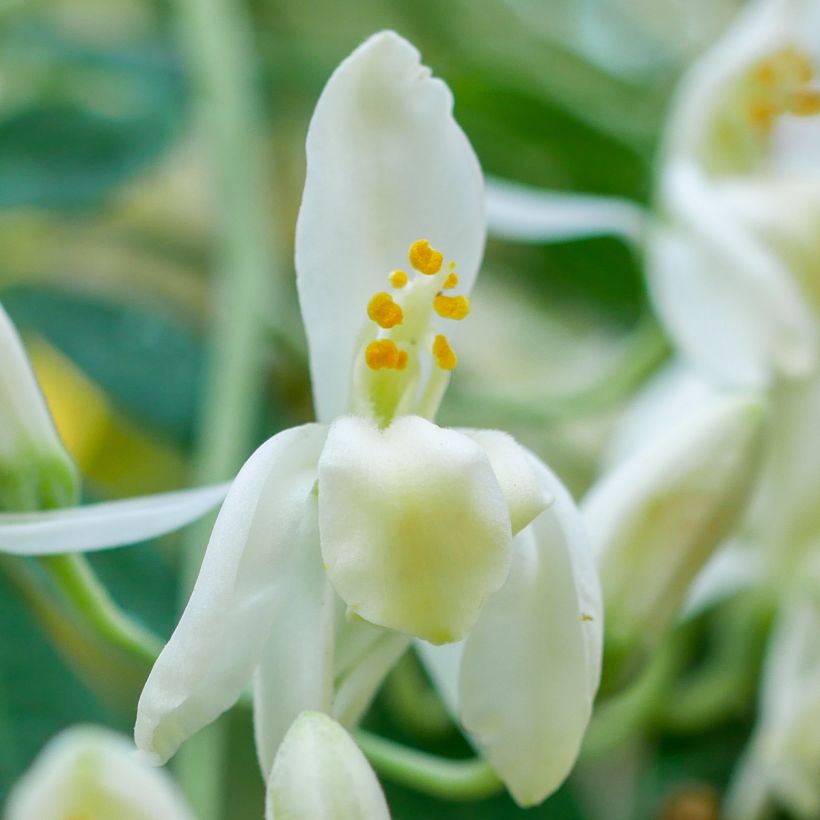

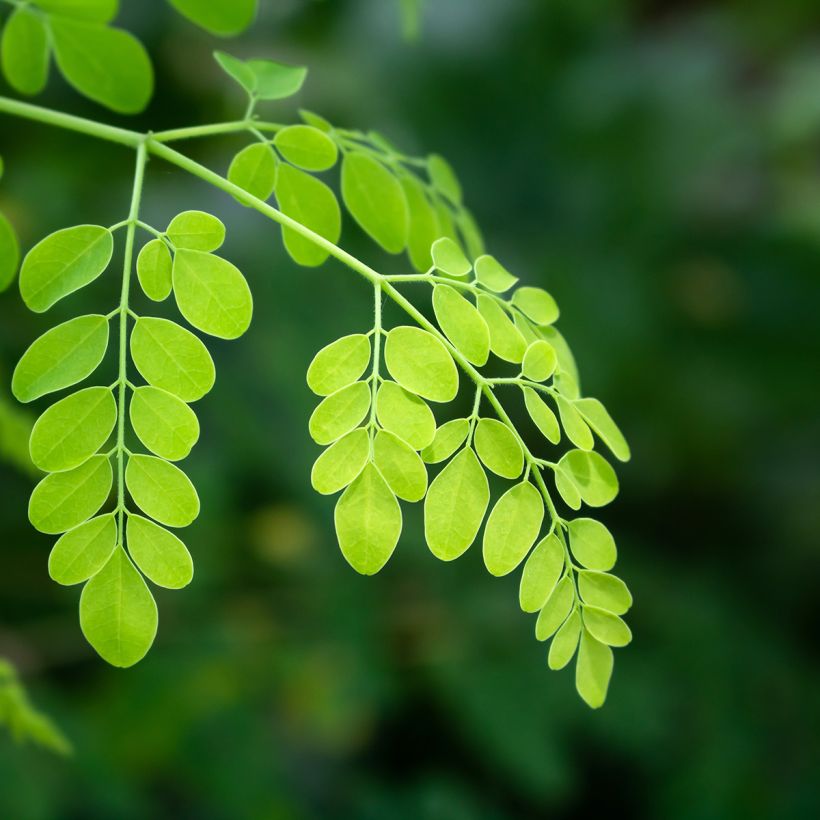

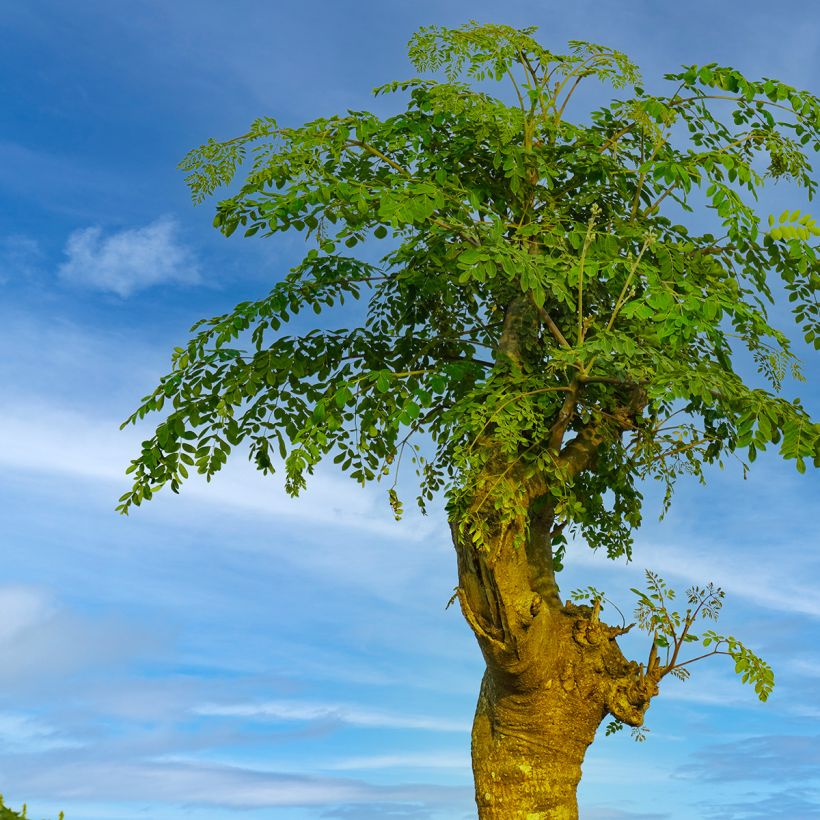

Plant habit
Flowering
Foliage
Botanical data
Moringa
oleifera
Moringaceae
Ben nut, Drumstick tree, Horseradish tree, Ben oil tree, Moringa
India
Other Shrubs A to Z
View all →Planting and care
Plant your Moringa all year round. It can only be grown in containers in our climate. The plant can spend the summer outdoors, from May-June to September, but should be brought indoors to a very bright room as soon as the nighttime temperatures drop below 10°C (50°F) (usually in September, or in October in the south of our country). Indeed, Moringa is a tree that thrives in a very warm climate, sometimes governed by two distinct seasons: the rainy season and the dry season. It cannot tolerate any frost and does not handle temperature fluctuations between day and night very well.
Moringa loves the sun and is susceptible to wind that can break its fragile branches. We recommend planting it in a large container measuring approximately 1m (3ft) in all directions, with a perforated bottom. It requires well-draining soil, a mixture of good quality compost and a little sand will do. It should be placed in a very sunny location. Capable of storing water when available, it needs regular watering in the container: once a week with a little fertiliser from May until leaf fall in autumn, reducing watering from October to the end of April. This small tree is not bothered by the dry air in our heated homes and apartments. It responds well to pruning, which helps limit its growth: shortening the branches allows for densification of its crown and thickening of its trunk. If pruned down to the level of the trunk, the plant will develop shoots and become more bushy than shrubby.
Indoors, be careful of spider mite attacks. Simply spray the foliage to make them disappear.
Planting period
Intended location
Care
Planting & care advice
This item has not been reviewed yet - be the first to leave a review about it.
Similar products
Haven't found what you were looking for?
Hardiness is the lowest winter temperature a plant can endure without suffering serious damage or even dying. However, hardiness is affected by location (a sheltered area, such as a patio), protection (winter cover) and soil type (hardiness is improved by well-drained soil).

Photo Sharing Terms & Conditions
In order to encourage gardeners to interact and share their experiences, Promesse de fleurs offers various media enabling content to be uploaded onto its Site - in particular via the ‘Photo sharing’ module.
The User agrees to refrain from:
- Posting any content that is illegal, prejudicial, insulting, racist, inciteful to hatred, revisionist, contrary to public decency, that infringes on privacy or on the privacy rights of third parties, in particular the publicity rights of persons and goods, intellectual property rights, or the right to privacy.
- Submitting content on behalf of a third party;
- Impersonate the identity of a third party and/or publish any personal information about a third party;
In general, the User undertakes to refrain from any unethical behaviour.
All Content (in particular text, comments, files, images, photos, videos, creative works, etc.), which may be subject to property or intellectual property rights, image or other private rights, shall remain the property of the User, subject to the limited rights granted by the terms of the licence granted by Promesse de fleurs as stated below. Users are at liberty to publish or not to publish such Content on the Site, notably via the ‘Photo Sharing’ facility, and accept that this Content shall be made public and freely accessible, notably on the Internet.
Users further acknowledge, undertake to have ,and guarantee that they hold all necessary rights and permissions to publish such material on the Site, in particular with regard to the legislation in force pertaining to any privacy, property, intellectual property, image, or contractual rights, or rights of any other nature. By publishing such Content on the Site, Users acknowledge accepting full liability as publishers of the Content within the meaning of the law, and grant Promesse de fleurs, free of charge, an inclusive, worldwide licence for the said Content for the entire duration of its publication, including all reproduction, representation, up/downloading, displaying, performing, transmission, and storage rights.
Users also grant permission for their name to be linked to the Content and accept that this link may not always be made available.
By engaging in posting material, Users consent to their Content becoming automatically accessible on the Internet, in particular on other sites and/or blogs and/or web pages of the Promesse de fleurs site, including in particular social pages and the Promesse de fleurs catalogue.
Users may secure the removal of entrusted content free of charge by issuing a simple request via our contact form.
The flowering period indicated on our website applies to countries and regions located in USDA zone 8 (France, the United Kingdom, Ireland, the Netherlands, etc.)
It will vary according to where you live:
- In zones 9 to 10 (Italy, Spain, Greece, etc.), flowering will occur about 2 to 4 weeks earlier.
- In zones 6 to 7 (Germany, Poland, Slovenia, and lower mountainous regions), flowering will be delayed by 2 to 3 weeks.
- In zone 5 (Central Europe, Scandinavia), blooming will be delayed by 3 to 5 weeks.
In temperate climates, pruning of spring-flowering shrubs (forsythia, spireas, etc.) should be done just after flowering.
Pruning of summer-flowering shrubs (Indian Lilac, Perovskia, etc.) can be done in winter or spring.
In cold regions as well as with frost-sensitive plants, avoid pruning too early when severe frosts may still occur.
The planting period indicated on our website applies to countries and regions located in USDA zone 8 (France, United Kingdom, Ireland, Netherlands).
It will vary according to where you live:
- In Mediterranean zones (Marseille, Madrid, Milan, etc.), autumn and winter are the best planting periods.
- In continental zones (Strasbourg, Munich, Vienna, etc.), delay planting by 2 to 3 weeks in spring and bring it forward by 2 to 4 weeks in autumn.
- In mountainous regions (the Alps, Pyrenees, Carpathians, etc.), it is best to plant in late spring (May-June) or late summer (August-September).
The harvesting period indicated on our website applies to countries and regions in USDA zone 8 (France, England, Ireland, the Netherlands).
In colder areas (Scandinavia, Poland, Austria...) fruit and vegetable harvests are likely to be delayed by 3-4 weeks.
In warmer areas (Italy, Spain, Greece, etc.), harvesting will probably take place earlier, depending on weather conditions.
The sowing periods indicated on our website apply to countries and regions within USDA Zone 8 (France, UK, Ireland, Netherlands).
In colder areas (Scandinavia, Poland, Austria...), delay any outdoor sowing by 3-4 weeks, or sow under glass.
In warmer climes (Italy, Spain, Greece, etc.), bring outdoor sowing forward by a few weeks.































